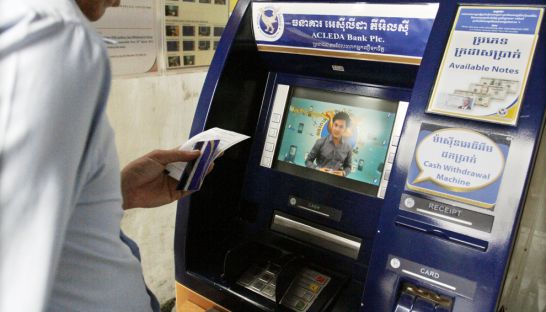Credit to hit $30B by ’20: MSP
Credit to hit $30B by ’20: MSP
Cambodia's outstanding credit balances could more than triple in over the next six years, according to a report published by investment firm Mekong Strategic Partners (MSP).

Driven by a nominal GDP growth outlook of 11 per cent and continued “financial deepening” – the rising number of people gaining access to banking products and finance – MSP predicts that Cambodia’s outstanding credit balances could swell to $30 billion by 2020, up from $8.5 billion at the end of 2013.
“Based on the level of GDP growth and financial deepening, we believe that credit growth is likely to average at least 15 per cent, and up to 20 per cent out to 2020,” the report states.
MSP’s assessment of Cambodia’s credit demands comes a month after the Credit Bureau of Cambodia (CBC) published its first-ever outlook. Taking into account only consumer credit demands – such as small loans – the CBC estimated outstanding credit balances to reach $14 billion by 2020, up from a reported $5.7 billion in 2013.
However MSP says the CBC’s assessment was simply “too low”.
“The CBCs credit growth estimate was for consumer credit, and was based on a linear function with credit growing at just under $1.4 billion each year. Credit growth however is exponential, and to grow from $5.0 to $14.7 billion would imply annual growth of 16.6 per cent per annum,” the MSP report reads.
MSP warned that Cambodia’s commercial banks will need to step-up staffing and capital requirements if they want to remain relevant by the year 2020.
“The National Bank of Cambodia [NBC] will need to consider increasing minimum capital, potentially to $75 million. Ideally this decision would be made prior to 2017 if not earlier, with a transition period to ensure banks have adequate time to reach the new minimum prior to 2020.”
Currently, commercial banks in Cambodia are required to have a minimum of $37.5 million to operate.
MSP also called on the NBC to introduce a loan-to-deposit ratio cap, potentially limiting the amount of credit banks can issue while also maintaining healthy savings and deposits levels.
Grant Knuckey, CEO of ANZ Royal, said while MSP’s prediction is certainly possible, it would pose significant risks for Cambodia’s still volatile economy.
“You have to put the number in context – $30 billion of credit would equate to approximately 120 to 130 per cent of GDP by 2020,” Knuckey told the Post via email yesterday.
“That level of debt would be very unhealthy in a developing market, and extremely risky. The better question therefore, is whether there is any prudential curb to prevent that happening – the unfortunate truth at this point is that there really isn’t, other than capital adequacy levels at banks.”
In Channy, CEO of Acleda Bank, is doubtful about MSP’s estimates, saying outstanding credit balances are more likely to reach $20 billion by 2020 – still higher than the CBC’s estimates – while also remaining below the country’s GDP output.
“This is certainly a warning sign as Cambodia cannot sustain credit growth that is higher than its gross domestic product and output. We do not have the diversified economy, or diverse financial products to support such profound growth,” Channy said.
Channy said the NBC would first need to permit interbank credit, allowing commercial banks to transfer funds between themselves quickly and at low interest to support credit expansion or sudden bank runs by clients.
But Cambodia’s future appetite for credit may hinge on a much more deep-seeded issue – that is, the mistrust for the Cambodian riel and dependency on the US dollar, which now accounts for 85 per cent of Cambodia’s economy. According to Jayan Menon, lead economist at the Asian Development Bank (ADB), the dependency on the dollar is likely to hinder the rate of financial deepening in Cambodia.
“Projecting long-term credit growth must also address the dollarization issue [and] it is unlikely that Cambodia will be de-dollarised by 2020,” Menon said. “Financial deepening will be constrained by dollarization, leaving the share of the unbanked higher than it would otherwise be. Therefore, credit growth is unlikely to be as high as it is in countries where citizens willingly hold the currency the government prints.”
But Stephen Higgins, managing partner of MSP and co-author of the report, said he believed GDP will be well over $30 billion by 2020 on a “nominal” basis.
“And the only way Credit to GDP could be 120 -130 per cent would be if nominal GDP growth fell to 6-7 per cent (meaning that real GDP growth would be around 2 per cent -3 percent). And the Cambodian economy is starting to diversify. While the garment sector is important, we’re seeing more sophisticated manufacturing coming in from the likes of Minebea, and also a more vibrant services sector with things like Aeon Mall opening.”
The National Bank of Cambodia did not respond to the Post’s requests for comment.
phnompenh post














